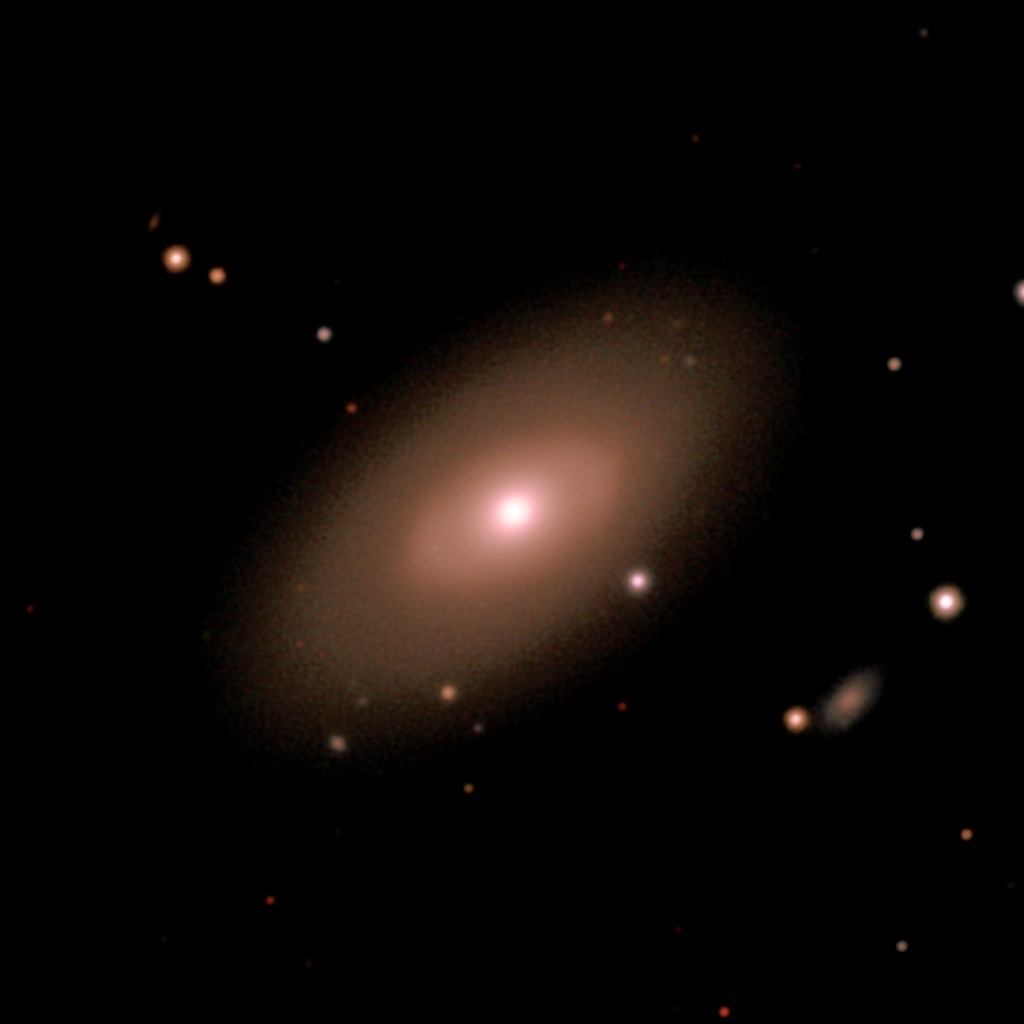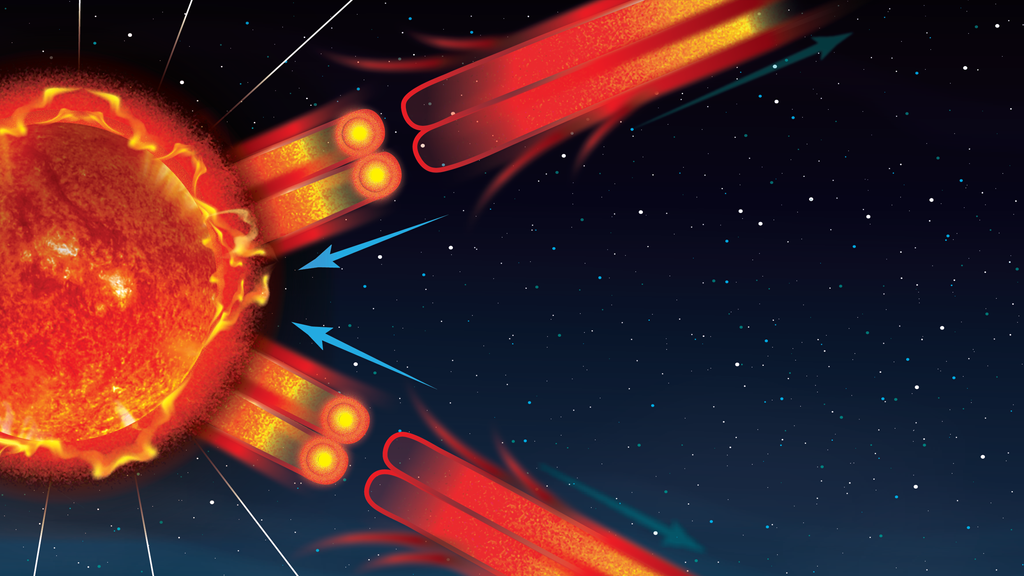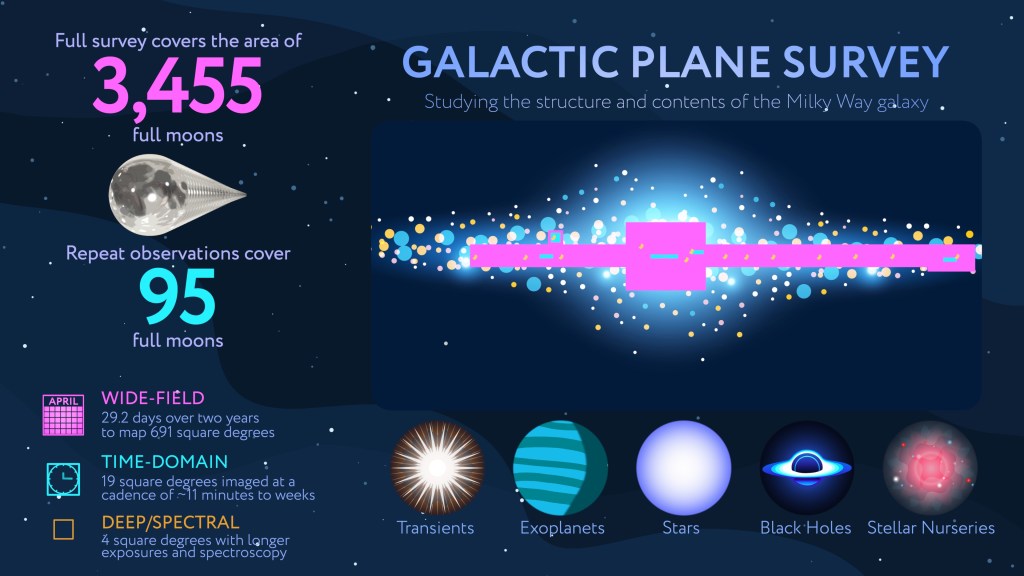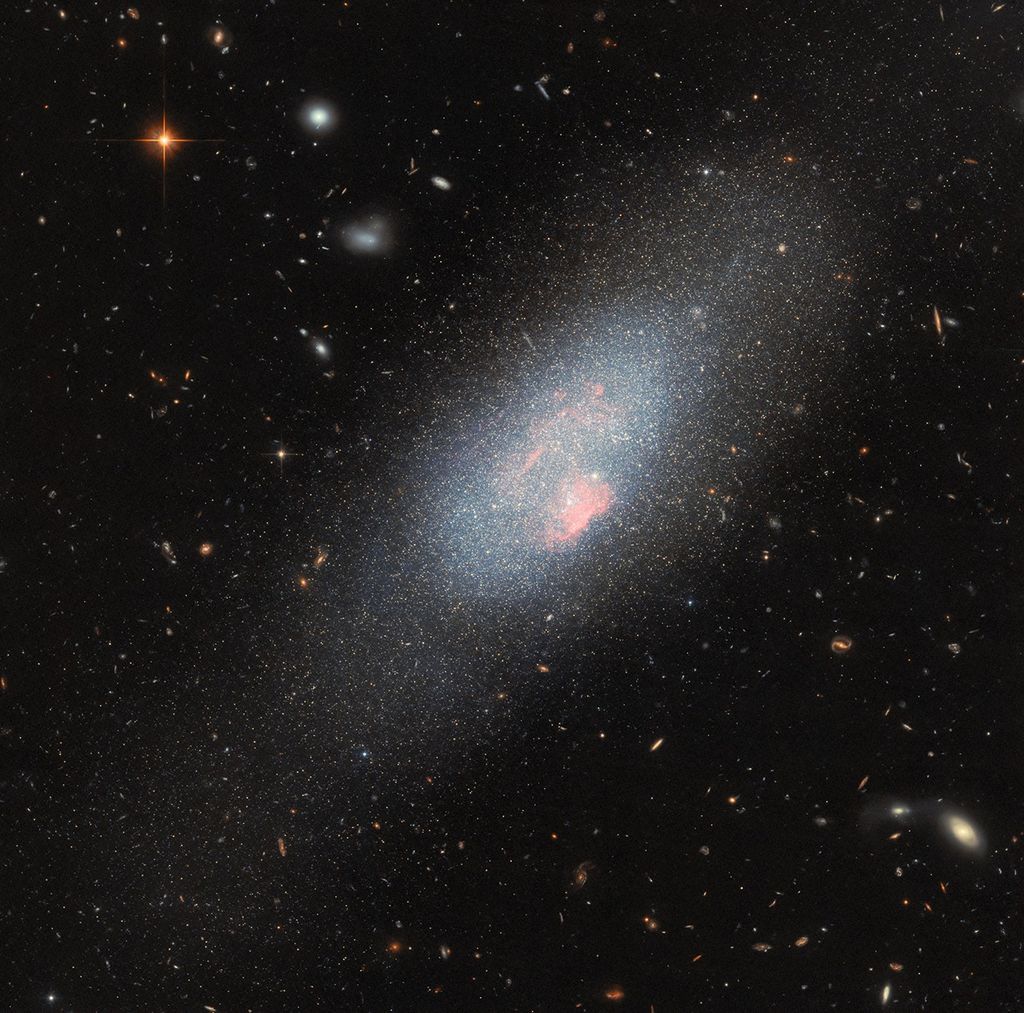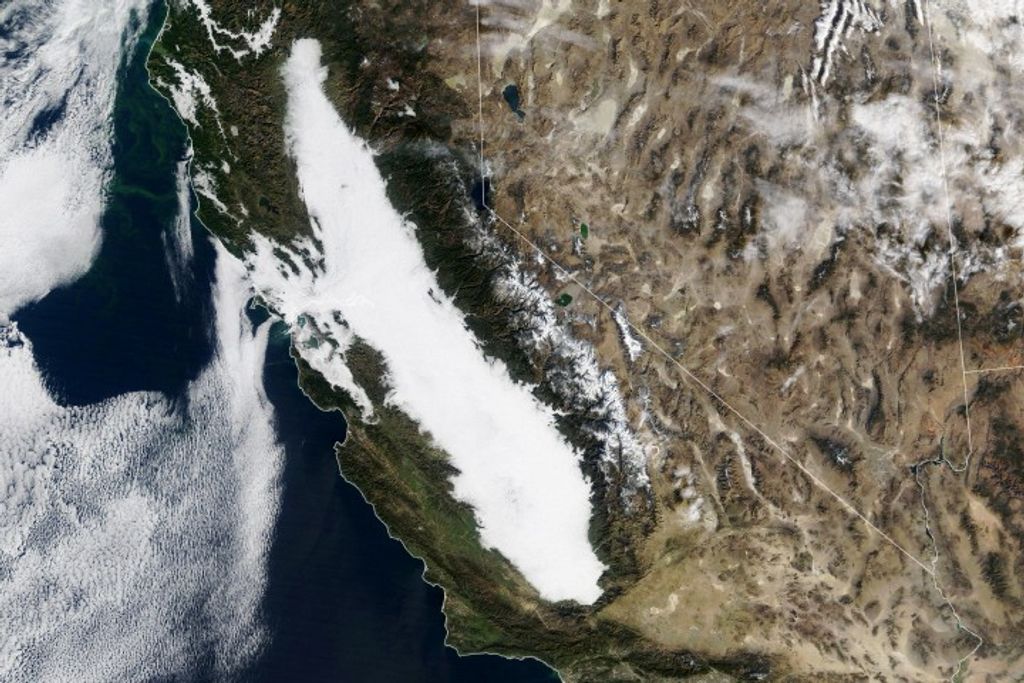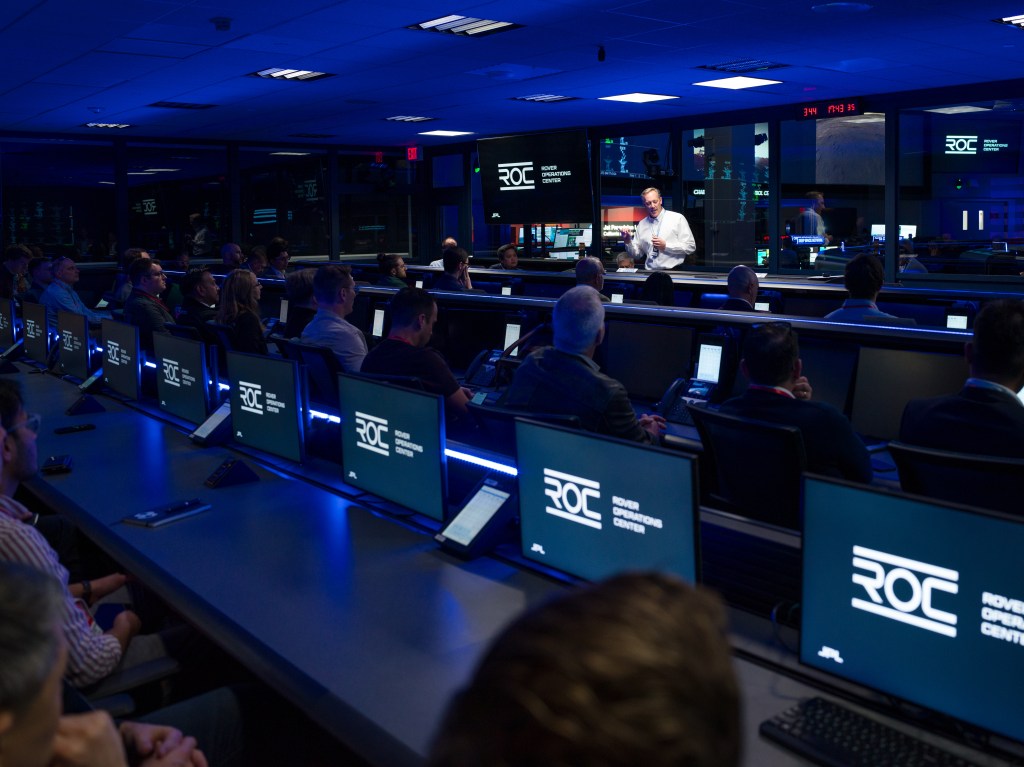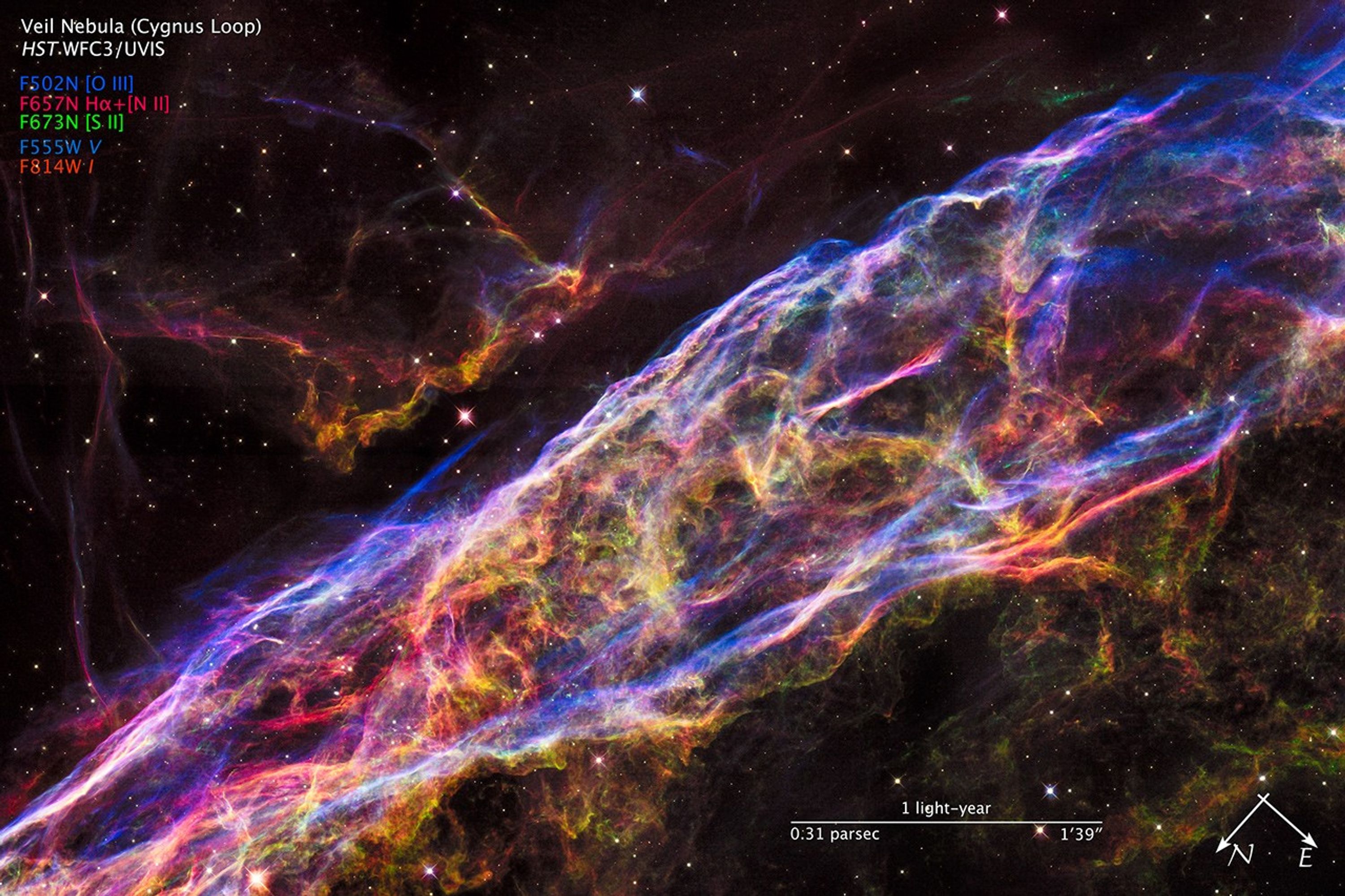1 min read
Veil Nebula Supernova Remnant

NASA's Hubble Space Telescope has unveiled in stunning detail a small section of the expanding remains of a massive star that exploded about 8,000 years ago.
Called the Veil Nebula, the debris is one of the best-known supernova remnants, deriving its name from its delicate, draped filamentary structures. The entire nebula is 110 light-years across, covering six full moons on the sky as seen from Earth, and resides about 2,100 light-years away in the constellation Cygnus, the Swan.
This view is a mosaic of six Hubble pictures of a small area roughly two light-years across, covering only a tiny fraction of the nebula's vast structure.
This close-up look unveils wisps of gas, which are all that remain of what was once a star 20 times more massive than our sun. The fast-moving blast wave from the ancient explosion is plowing into a wall of cool, denser interstellar gas, emitting light. The nebula lies along the edge of a large bubble of low-density gas that was blown into space by the dying star prior to its self-detonation.
The image shows an incredible array of structures and detail from the collision between the blast wave and the gas and dust that make up the cavity wall. The nebula resembles a crumpled bed sheet viewed from the side. The bright regions are where the shock wave is encountering relatively dense material or where the "bed sheet" ripples are viewed edge on.
In this image, red corresponds to the glow of hydrogen, green from sulfur, and blue from oxygen. The bluish features, outlining the cavity wall, appear smooth and arched in comparison to the fluffy green and red structures. The red glow is from cooler gas that was excited by the shock collision at an earlier time and has subsequently diffused into a more chaotic structure. A few thin, crisp-looking, red filaments arise after gas is swept into the shock wave at speeds of nearly 1 million miles an hour, so fast that it could travel from Earth to the moon in 15 minutes.
Astronomers are comparing these new images to images taken by Hubble in 1997. This comparison allows scientists to study how the nebula has expanded since it was photographed over 18 years ago.
About the Object
- R.A. PositionR.A. PositionRight ascension – analogous to longitude – is one component of an object's position.20h 45m 40.0s
- Dec. PositionDec. PositionDeclination – analogous to latitude – is one component of an object's position.30° 58' 30.0"
- ConstellationConstellationOne of 88 recognized regions of the celestial sphere in which the object appears.Cygnus
- DistanceDistanceThe physical distance from Earth to the astronomical object. Distances within our solar system are usually measured in Astronomical Units (AU). Distances between stars are usually measured in light-years. Interstellar distances can also be measured in parsecs.2,100 light-years (640 parsecs)
About the Data
- Data DescriptionData DescriptionProposal: A description of the observations, their scientific justification, and the links to the data available in the science archive.
Science Team: The astronomers who planned the observations and analyzed the data. "PI" refers to the Principal Investigator.The image of the Veil Nebula was created from Hubble data from proposals 14056: Hubble Heritage Team, PI: Z. Levay, M. Mutchler, J. Mack, S. Meyett, L. Frattare, C. Christian, J. Green, and M. Livio (STScI/AURA), and K. Noll (NASA/GSFC). - InstrumentInstrumentThe science instrument used to produce the data.HST>WFC3/UVIS
- Exposure DatesExposure DatesThe date(s) that the telescope made its observations and the total exposure time.April 14 - 17, 2015
- FiltersFiltersThe camera filters that were used in the science observations.F502N ([O III]), F657N (H-alpha+[N II]), F673N ([S II]), F555W (V), and F814W (I)
- Object NameObject NameA name or catalog number that astronomers use to identify an astronomical object.Veil Nebula, NGC 6960, Cygnus Loop
- Object DescriptionObject DescriptionThe type of astronomical object.Supernova Remnant
- Release DateSeptember 24, 2015
- Science ReleaseHubble Zooms in on Shrapnel from an Exploded Star
- CreditNASA, ESA, Hubble Heritage Project

This image is a composite of separate exposures acquired by the WFC3/UVIS instrument. Several filters were used to sample various wavelengths. The color results from assigning different hues (colors) to each monochromatic (grayscale) image associated with an individual filter. In this case, the assigned colors are: Blue: F502N ([O III]) Red: F657N (H-alpha+[N II]) Green: F673N ([S II]) Blue: F555W (V) Red: F814W (I)
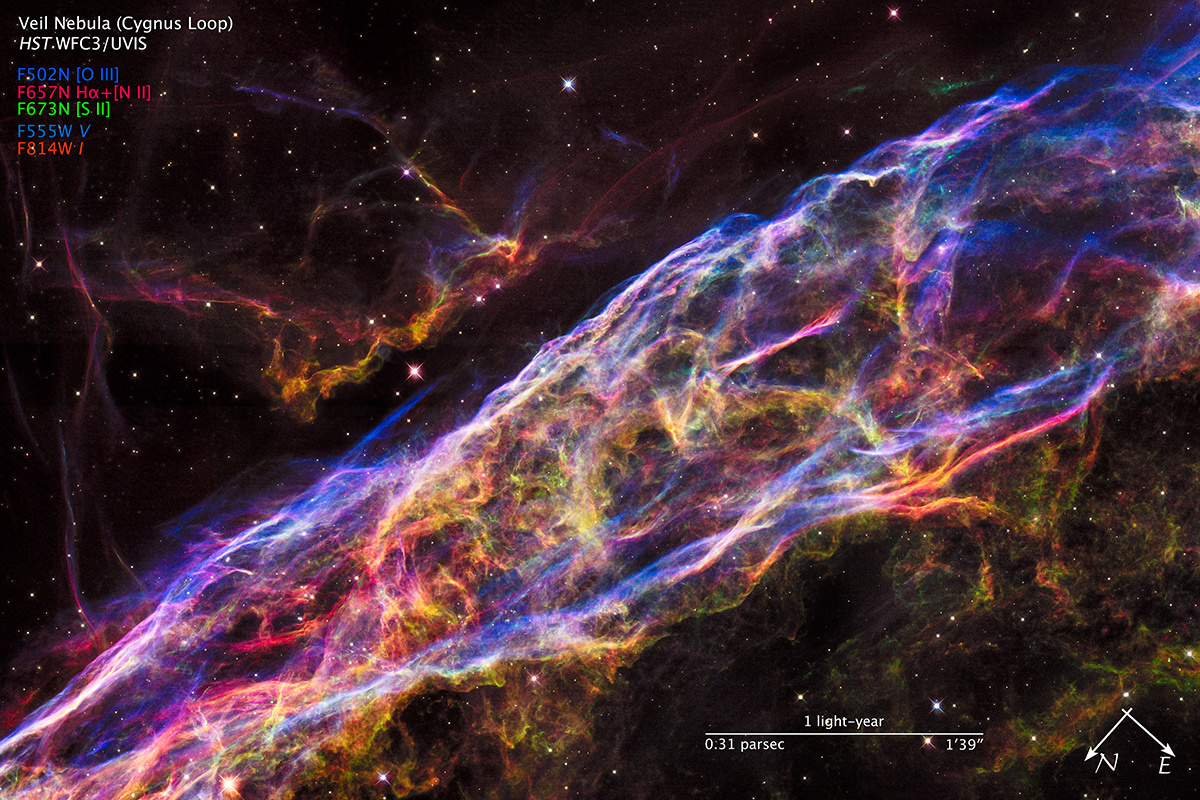
Related Images & Videos
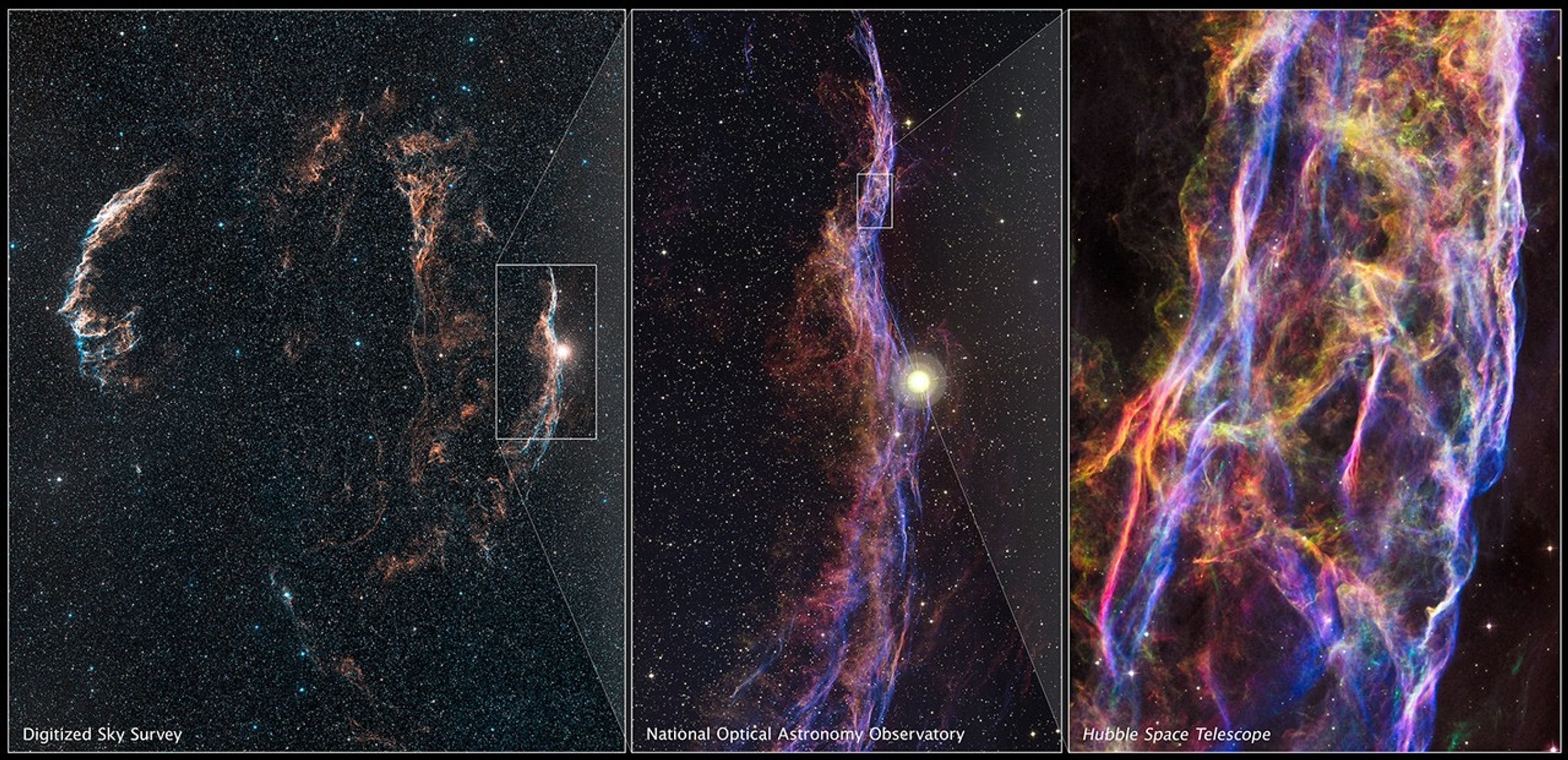
Cygnus Loop and Location of Veil Nebula
[Left] – This is a sky survey image of the Veil Nebula, a 110-light-year-wide expanding remnant of a star that exploded about 8,000 years ago in the constellation Cygnus. [Center] – This is a ground-based telescope image of a 15-light-year-long stretch of the eastern portion of...
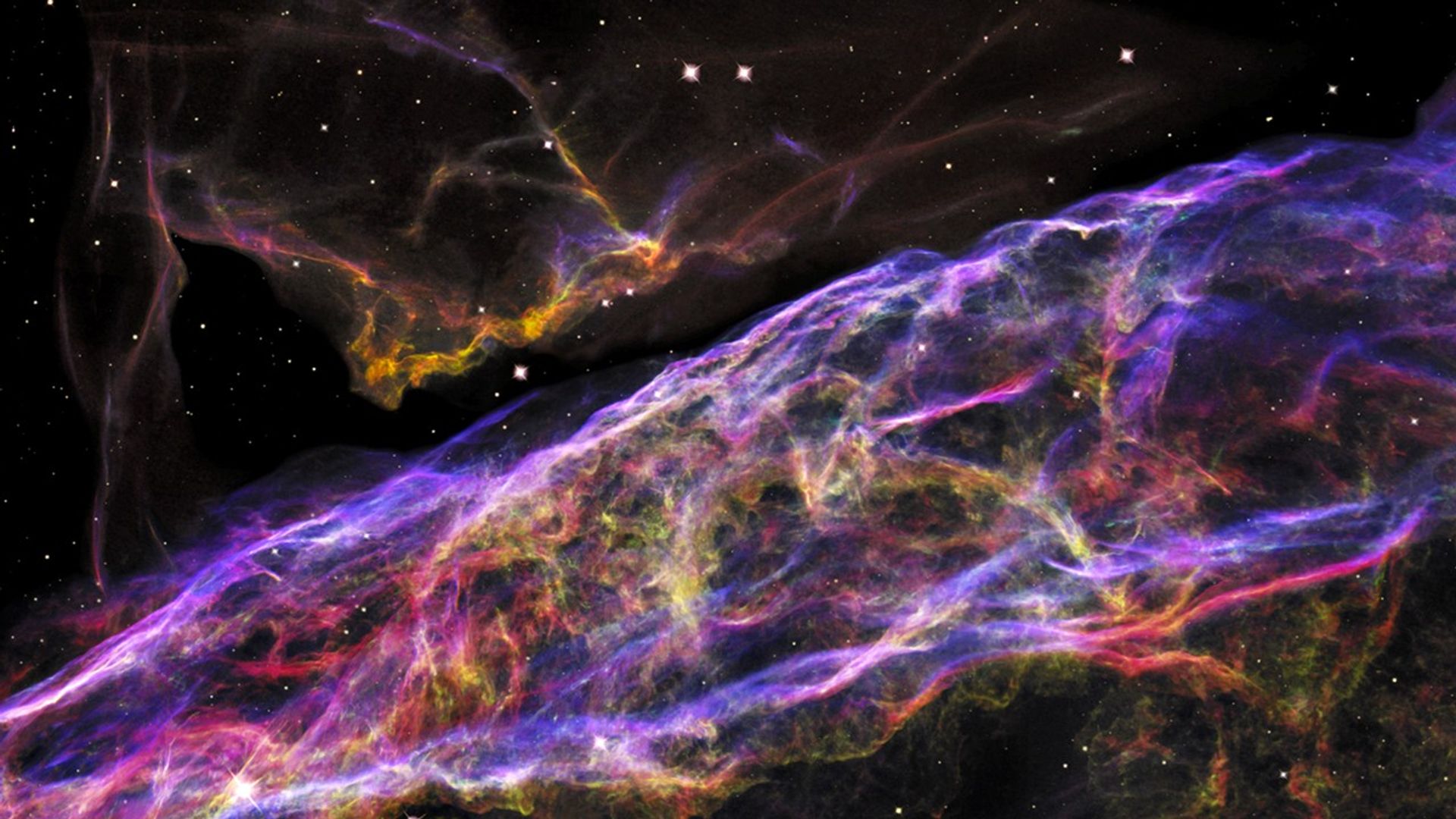
3-D Flyover Visualization of Veil Nebula
This 3-D visualization flies across a small portion of the Veil Nebula as photographed by the Hubble Space Telescope. This region is a small part of a huge expanding remnant from a star that exploded many thousands of years ago. Hubble resolves tangled rope-like filaments of...
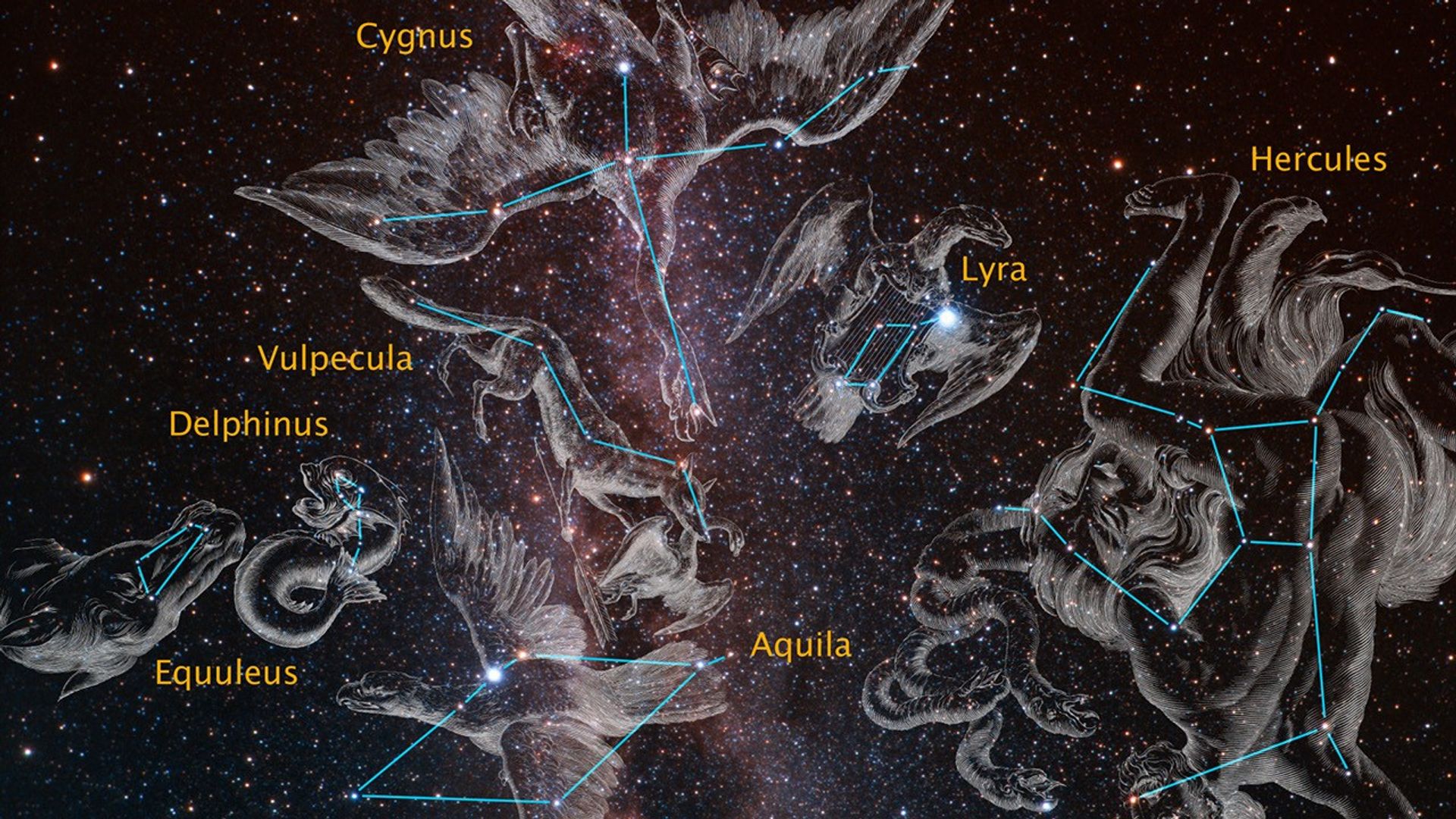
Zoom into Veil Nebula
This video opens with a backyard view of the nighttime sky centered on the constellation Cygnus, the Swan. We zoom into a vast donut-shaped feature called the Veil Nebula. It is the tattered expanding bubble of debris from a star that exploded about 8,000 years ago. The bubble...
Share
Details
Claire Andreoli
NASA’s Goddard Space Flight Center
Greenbelt, Maryland
claire.andreoli@nasa.gov


